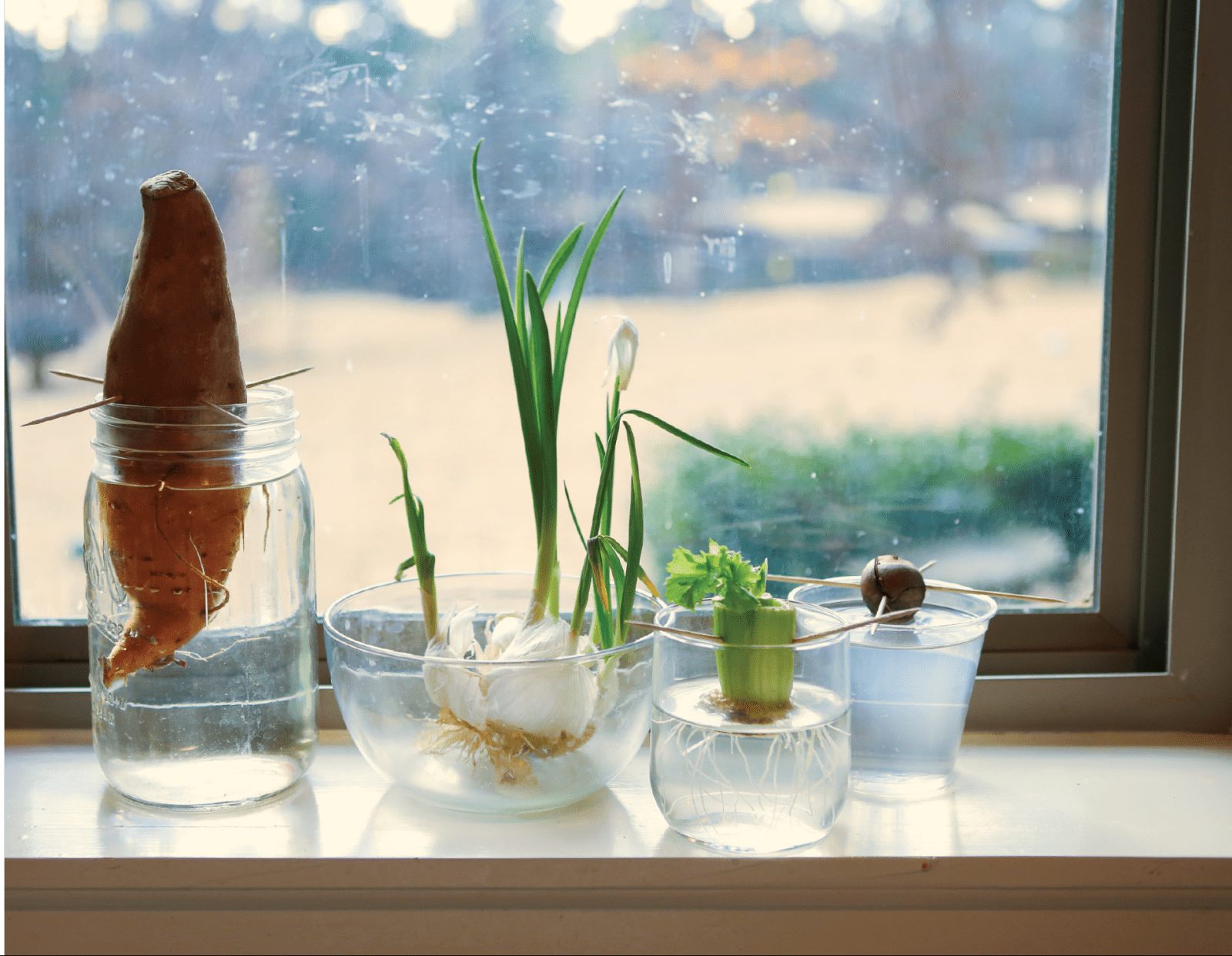Garbage Gardening

photo by Erin Treadway / by Heather Thomson
Earth Day is a great excuse to go out of your way to hold conversations with your children about recycling and discuss why trees and plants are important to our world. One fun way to get the conversation started is by growing a plant with your children. Typically, you do not want to get started on a garden outside until after the last spring frost. So here are a few projects that can take place in the comfort of your home, and you can utilize items that may have ended up in your trash can! Easy, cheap and entertaining – what else can you ask for?
Fruits and vegetables in your trash can or refrigerator that will work:
Avocado
To grow an avocado from the pit, remove the pit from a ripe avocado. Puncture it with several tooth picks and suspend it over a glass of warm water. The avocado should be submersed about an inch in the water. Eventually stems and roots will grow. When the roots fill most of the glass it is time
to transplant it into dirt.
Potato or Sweet Potato
Let’s be honest, we are all excellent indoor potato growers. You forget to cook them and then before you know it – roots have appeared! But, your kids don’t know that. So impress them! The best way to grow a potato is wash it, cut it in half, puncture it with toothpicks and suspend it over a glass of water. Place in a window sill and before you know it, it will be sprouting.
Celery
Our test celery grew extremely fast. Cut the stalks of celery from the base and use them in your recipes. Instead of throwing the base away, take it and place it in a glass of water. Before long the base will grow roots. In 5 to 7 days it will be ready to transfer to dirt.
Garlic
Garlic was also a fast grower in our test kitchen. It is slightly tricker, though. If you have any leftover cloves of garlic you can use them to grow a new batch. The garlic we used was halfway used and still sprouted and grew roots. Take the unused cloves and separate them. Each clove will grow a new bulb. Place the clove in a shallow bowl. At first you want to only place a small amount of water at the bottom of glass, just enough to touch the clove. If too much water is used it could cause the clove to rot. After several days the clove will grow roots and you can add slightly more water. Eventually transplant it to dirt.
1) Locate Item
Choose an item that you no longer need in the kitchen, maybe even something that you thought had gone bad and were going to throw out in the trash.
2) Find a well-lit window sill
Location is key to getting your item to grow. A window sill that has afternoon sun is more ideal than morning sun.
3) Choose a container
What you are growing will determine how large of a container you will need. A large family-sized canned good is an appropriate size for a potato. Garlic needs a clear container so you can see how much water it is sitting in. Celery can grow in just about anything.
4) Watch it grow
It is important to check on the plants everyday. They tend to be thirsty and you will need to refill the water often. If the water in which the plant is sitting becomes cloudy, pour it out and refresh with new water.
5) Then plant outside
When local temperatures get past any chance of freeze it is time to transplant your new house plants into the outdoor garden. If your plants are ready to be transplanted to dirt before temperatures are warm enough go ahead and pot them and leave them inside.
Spruce Up Those Containers:
After choosing old cans and jars to plant your items – spruce it up! To add a texture or make it more aesthetically pleasing, hot glue twine rope around the can or jar.









